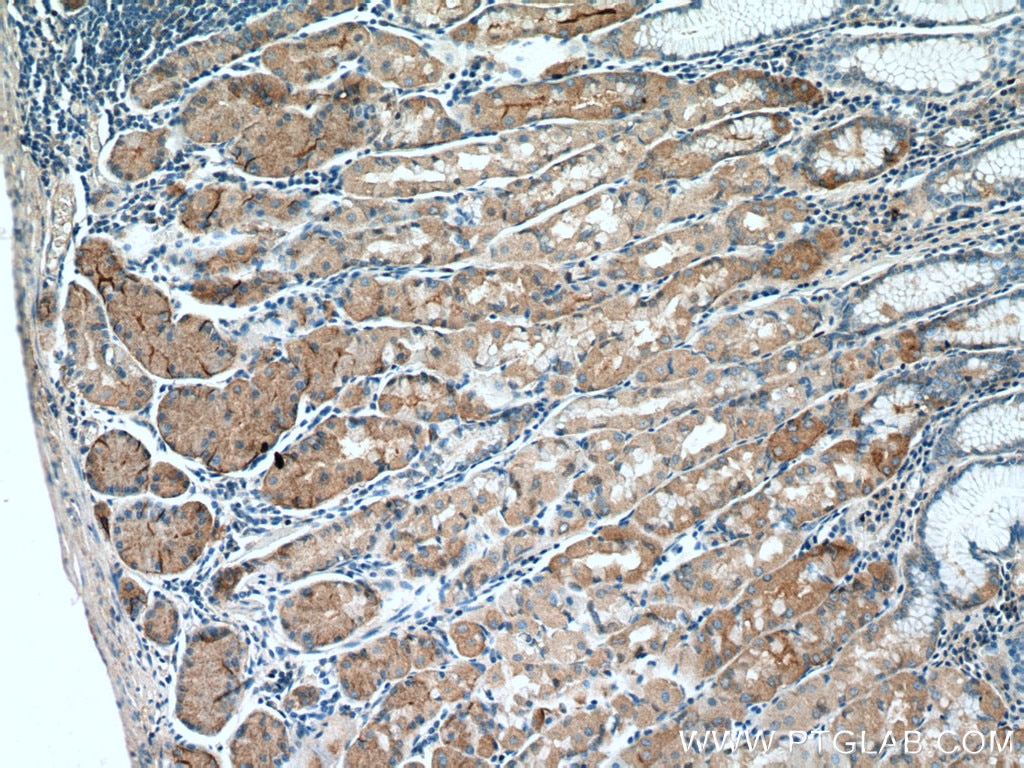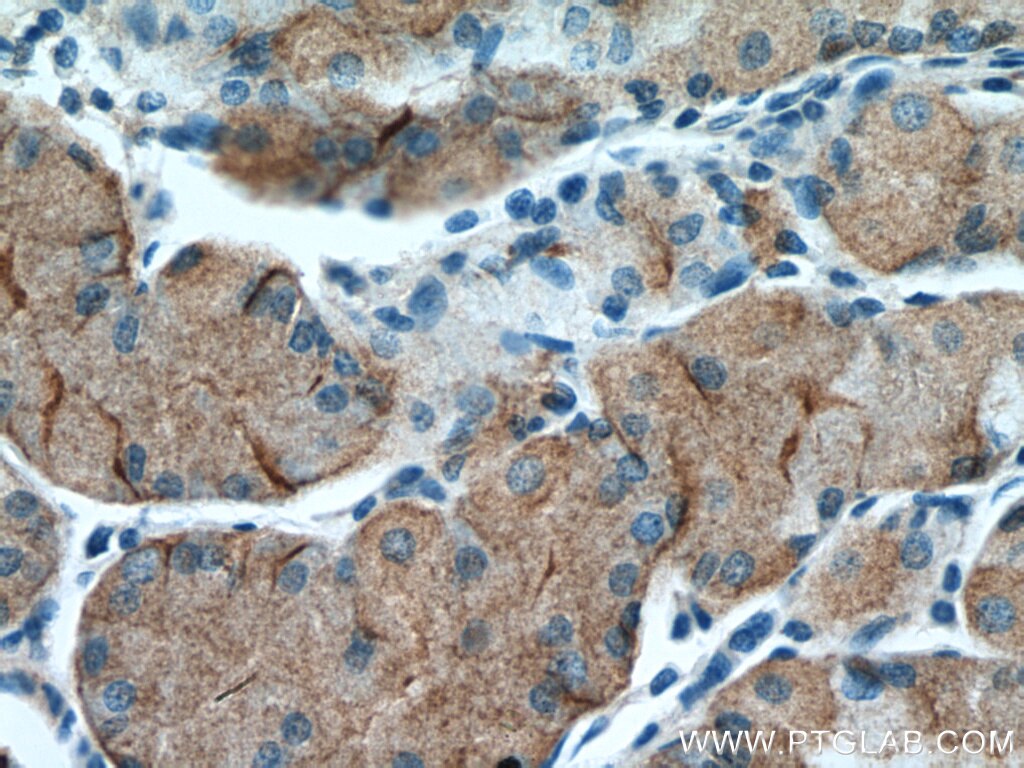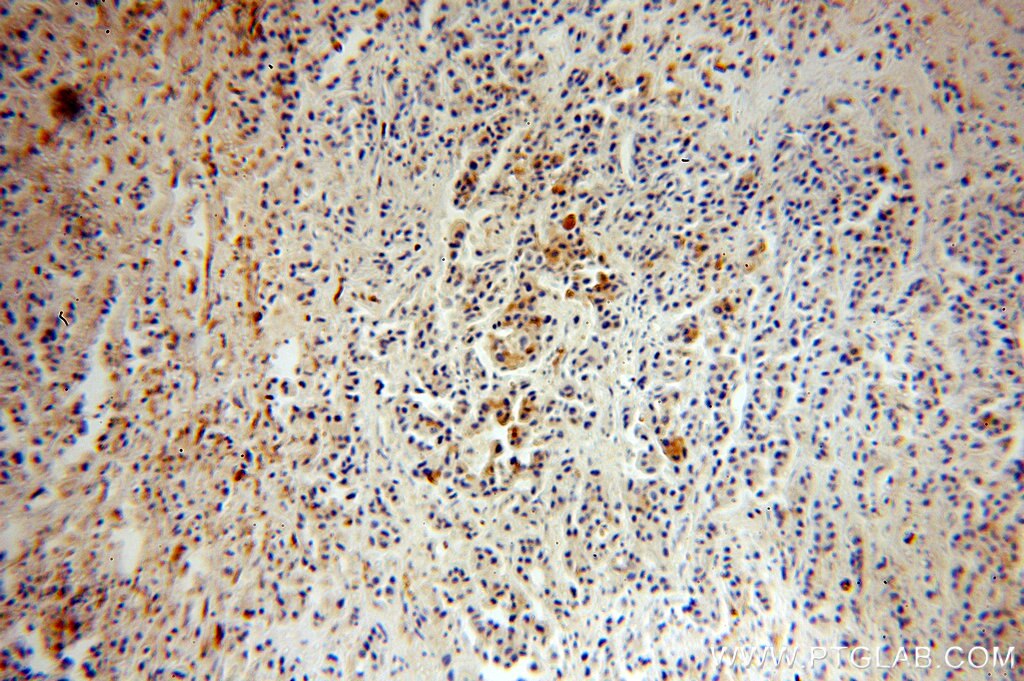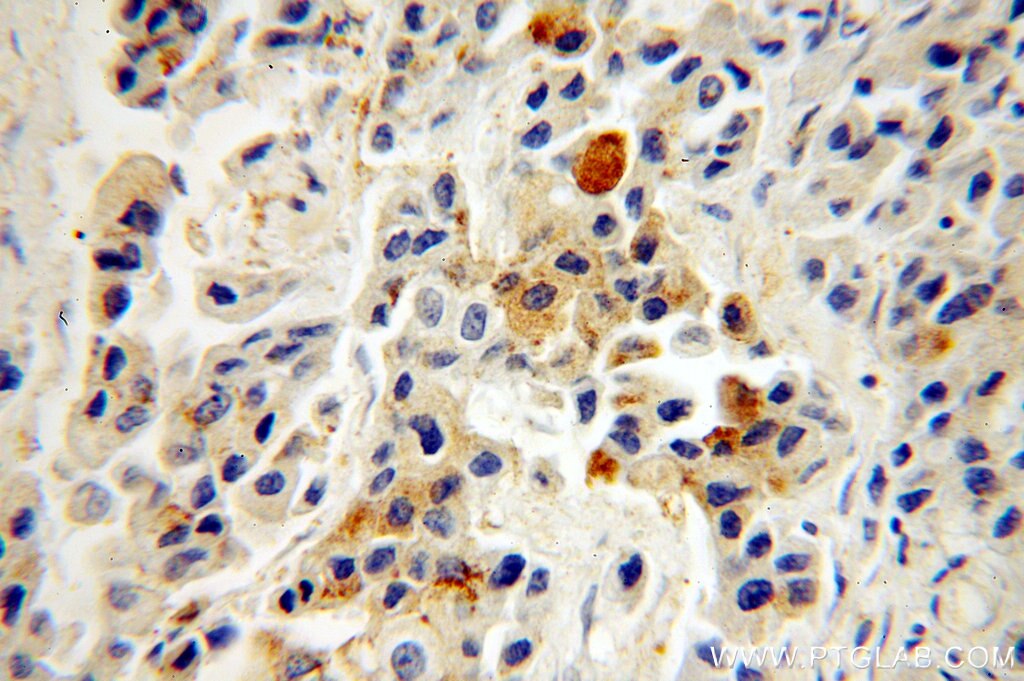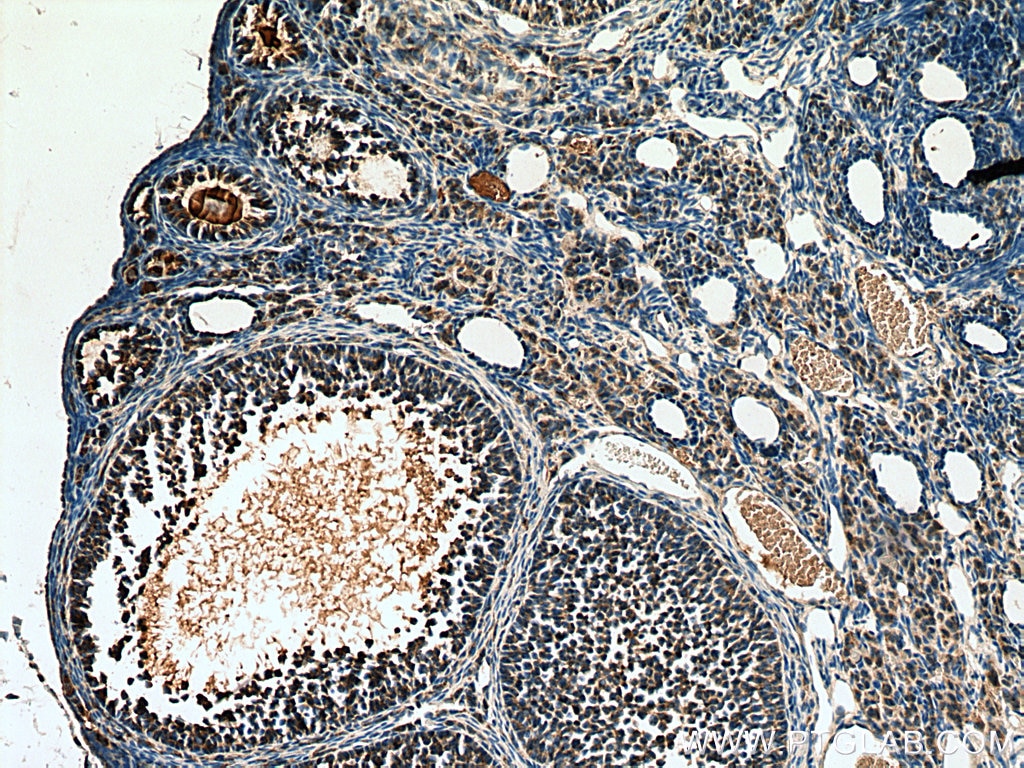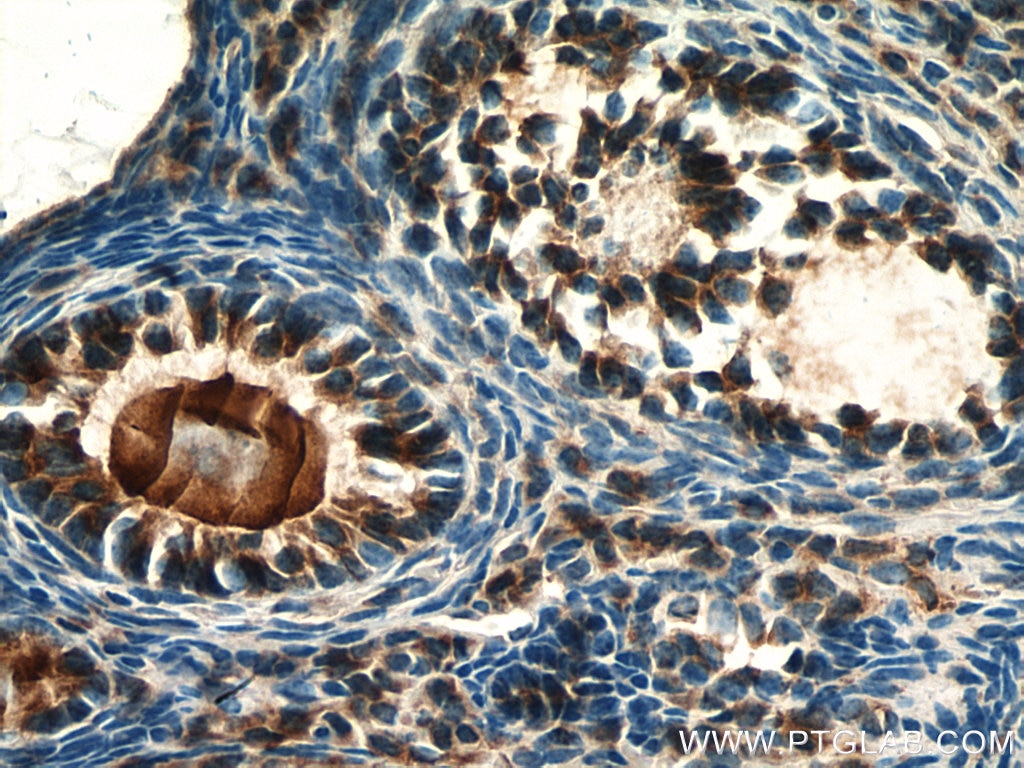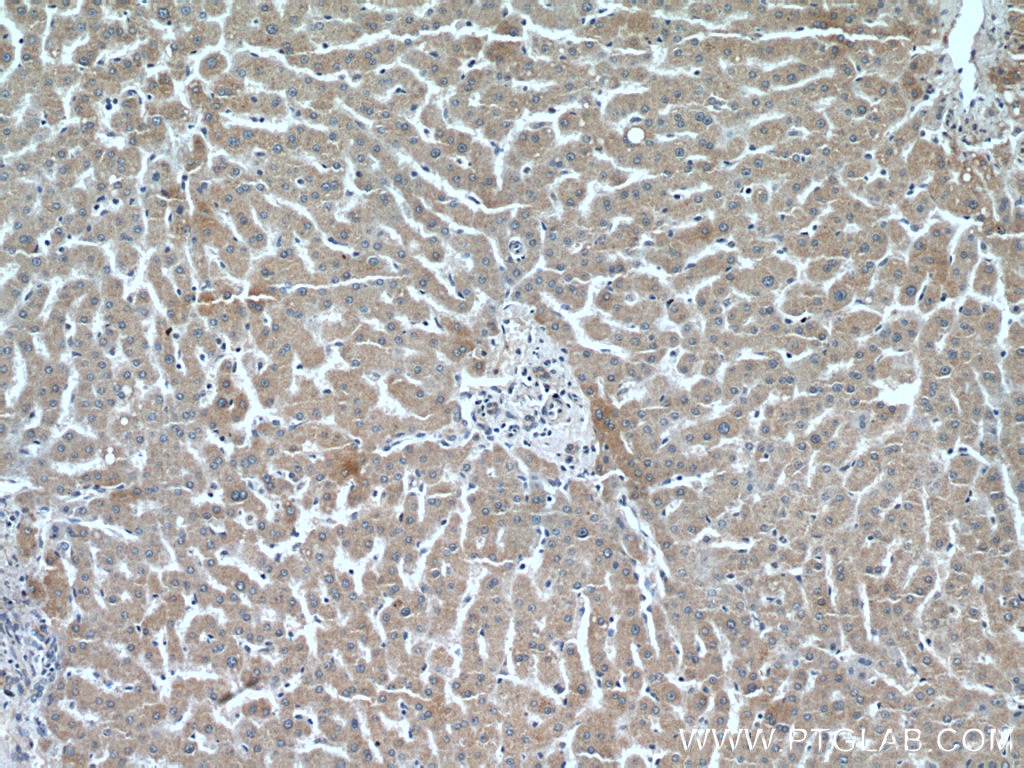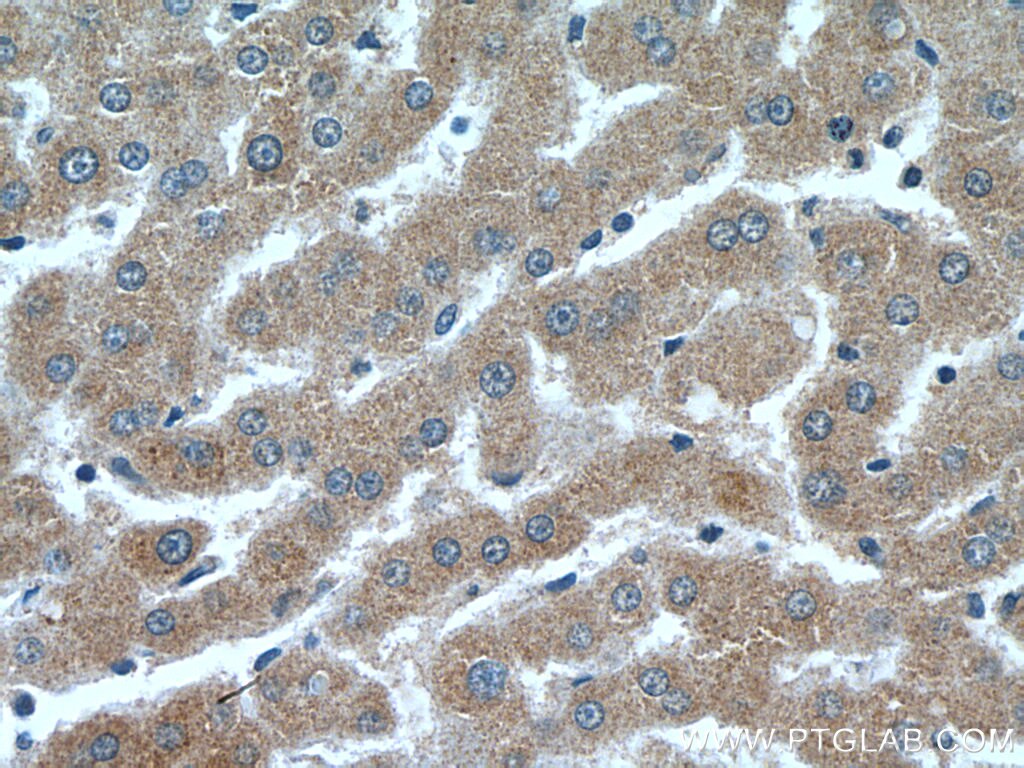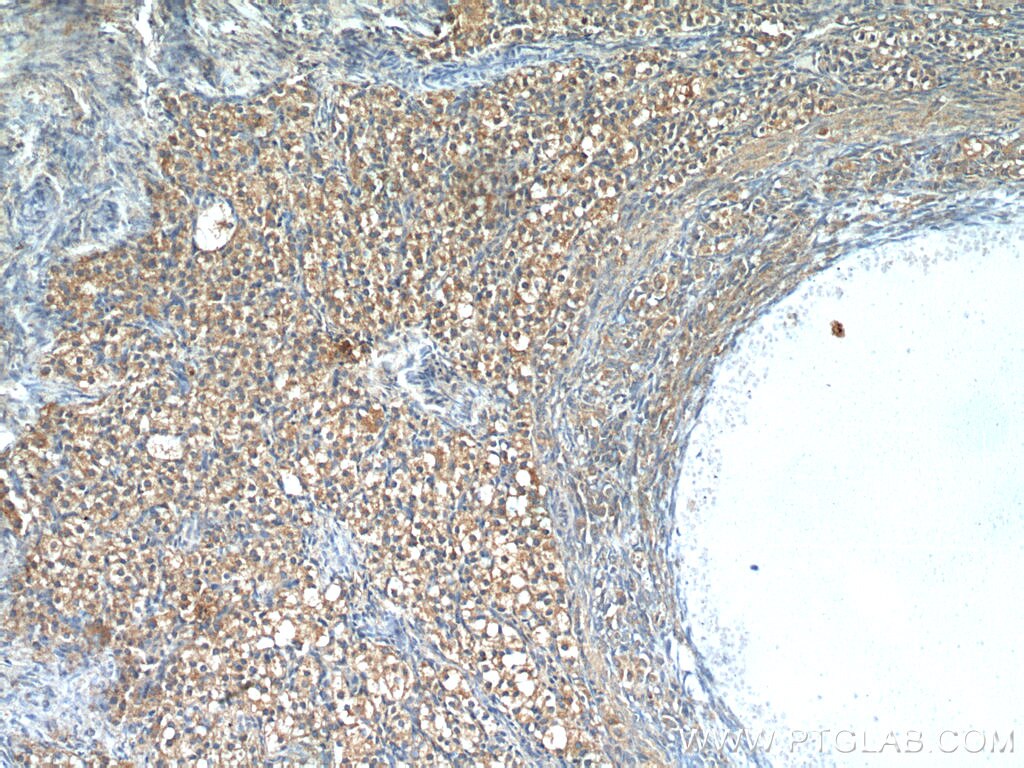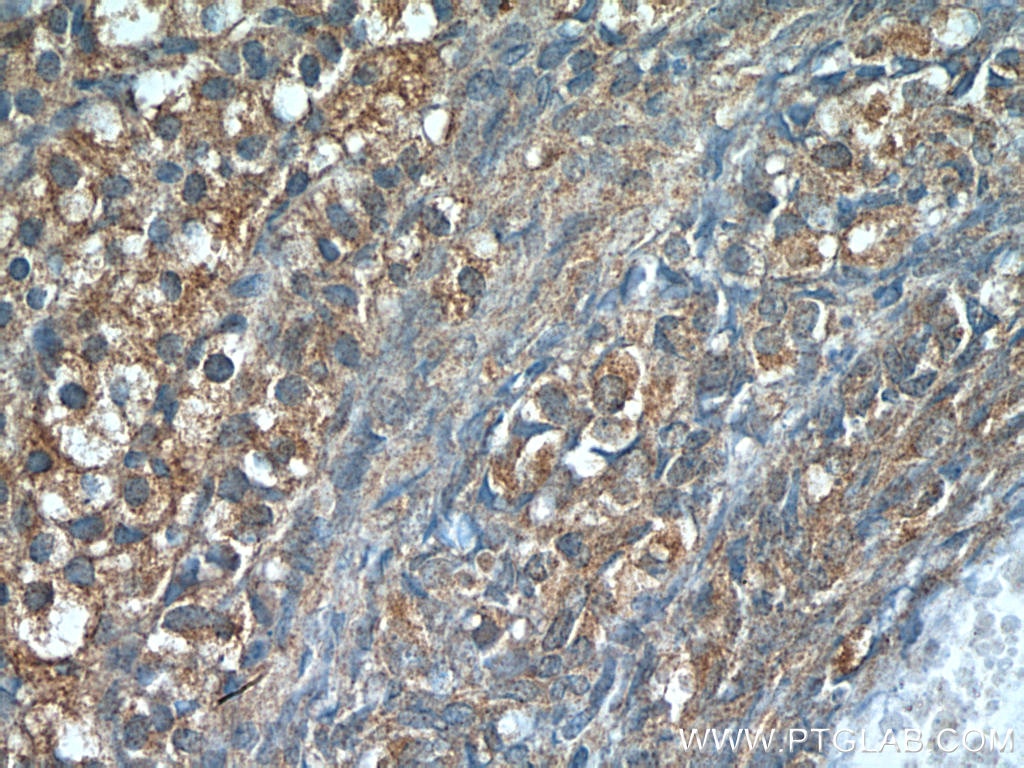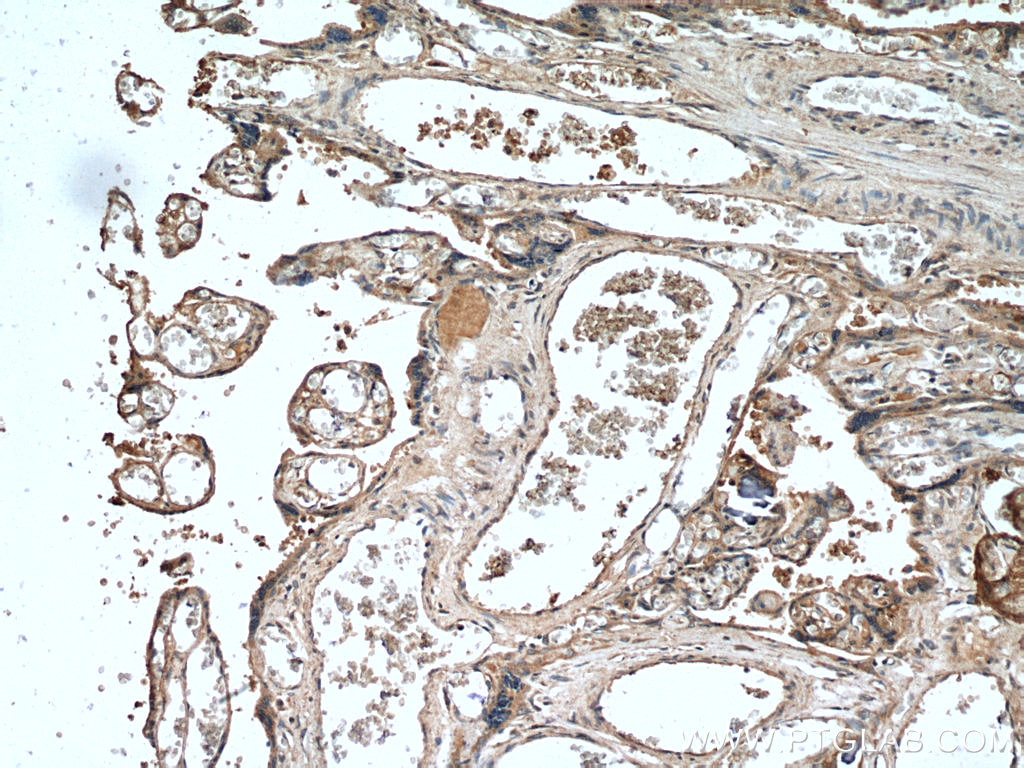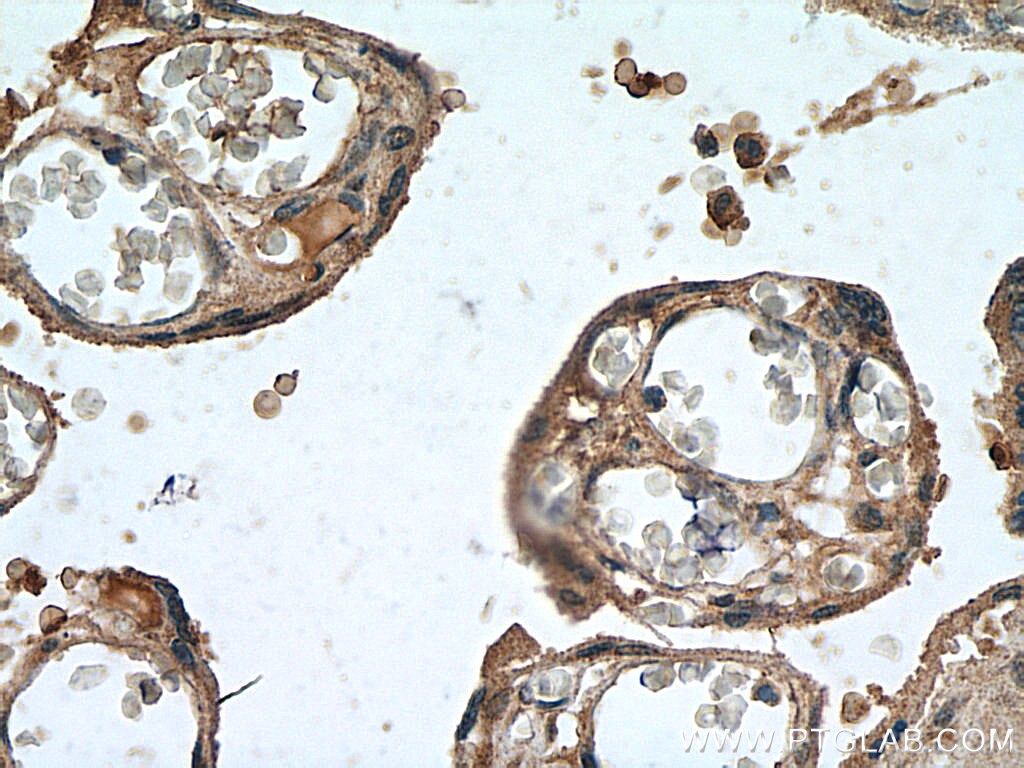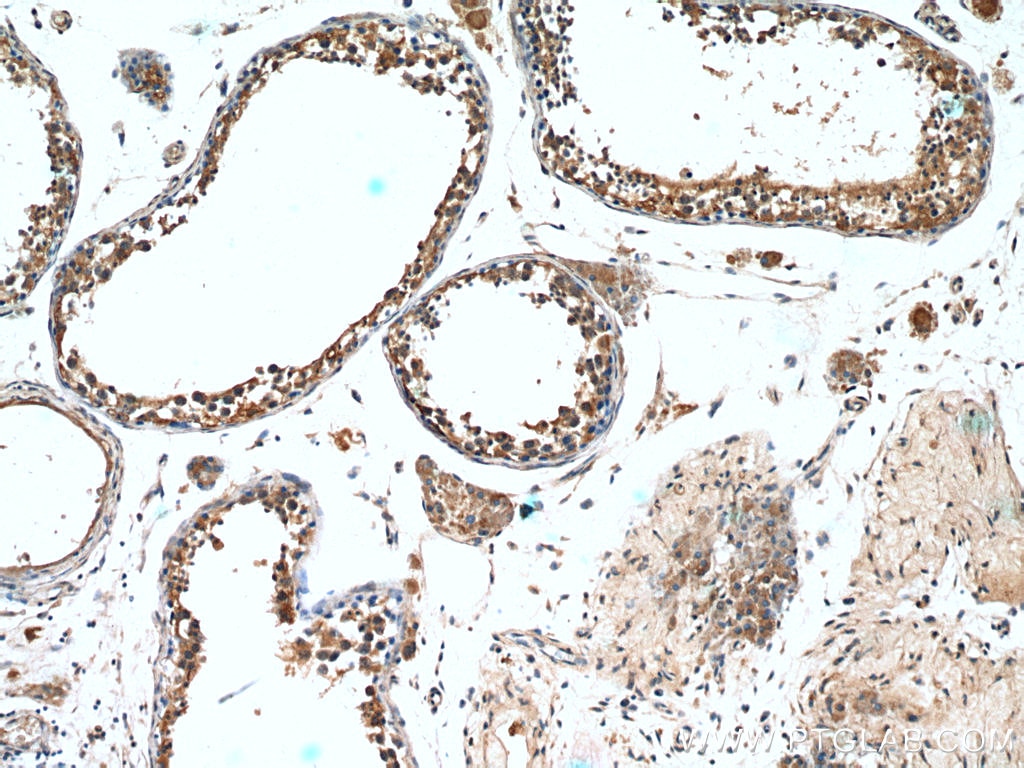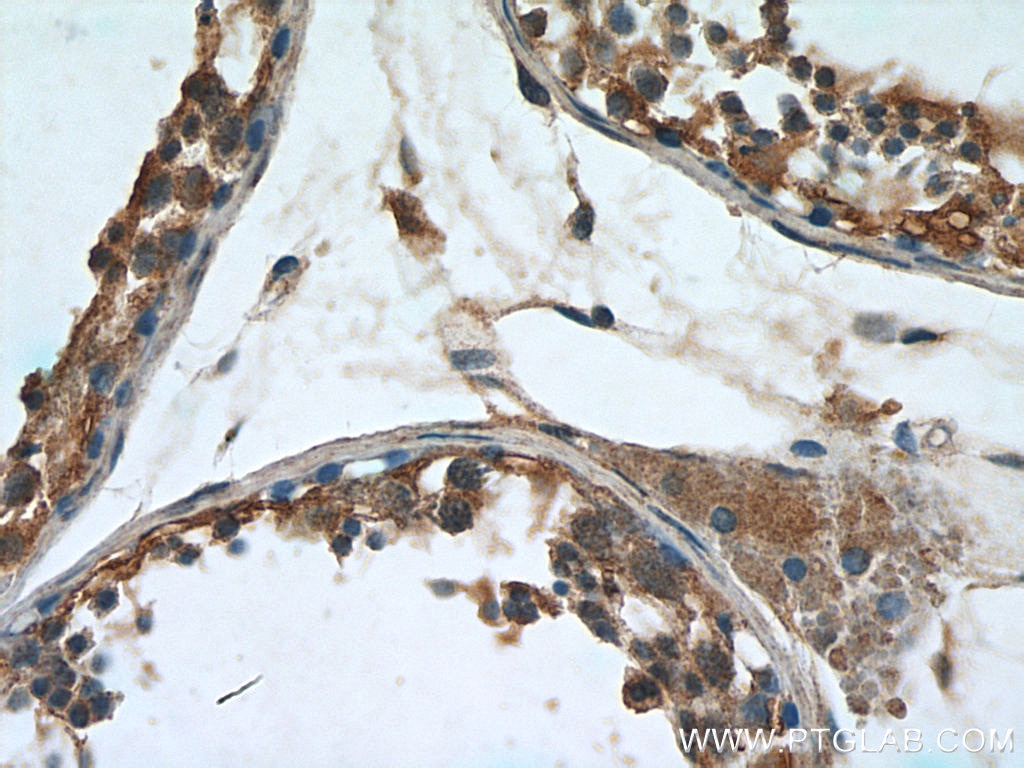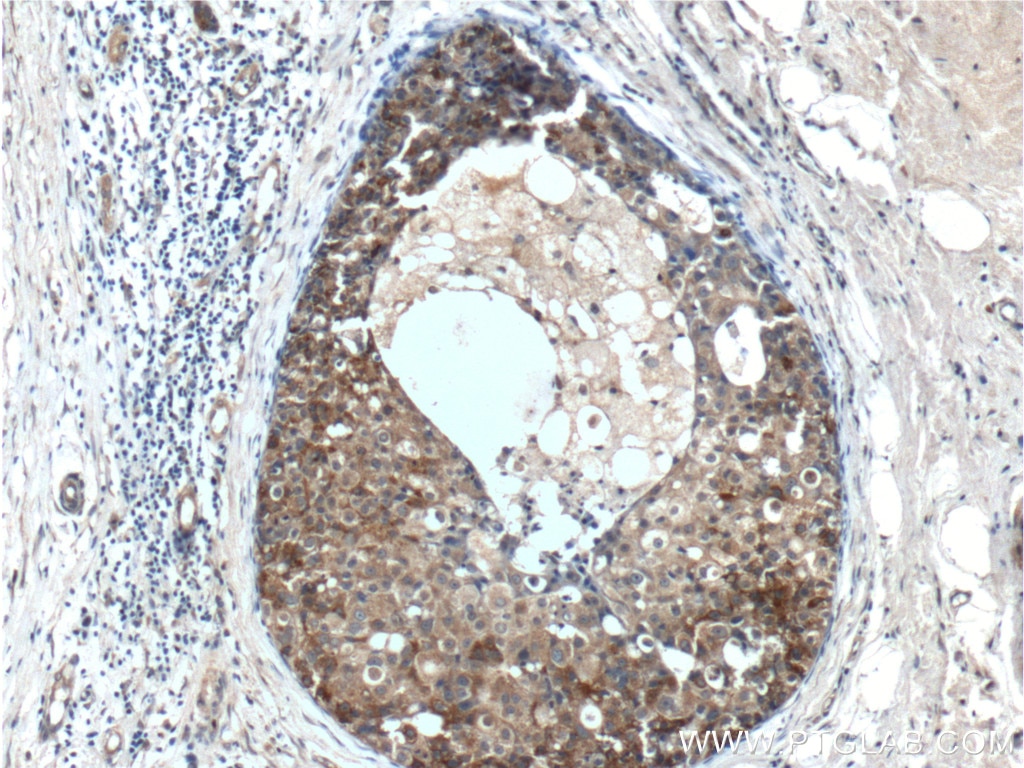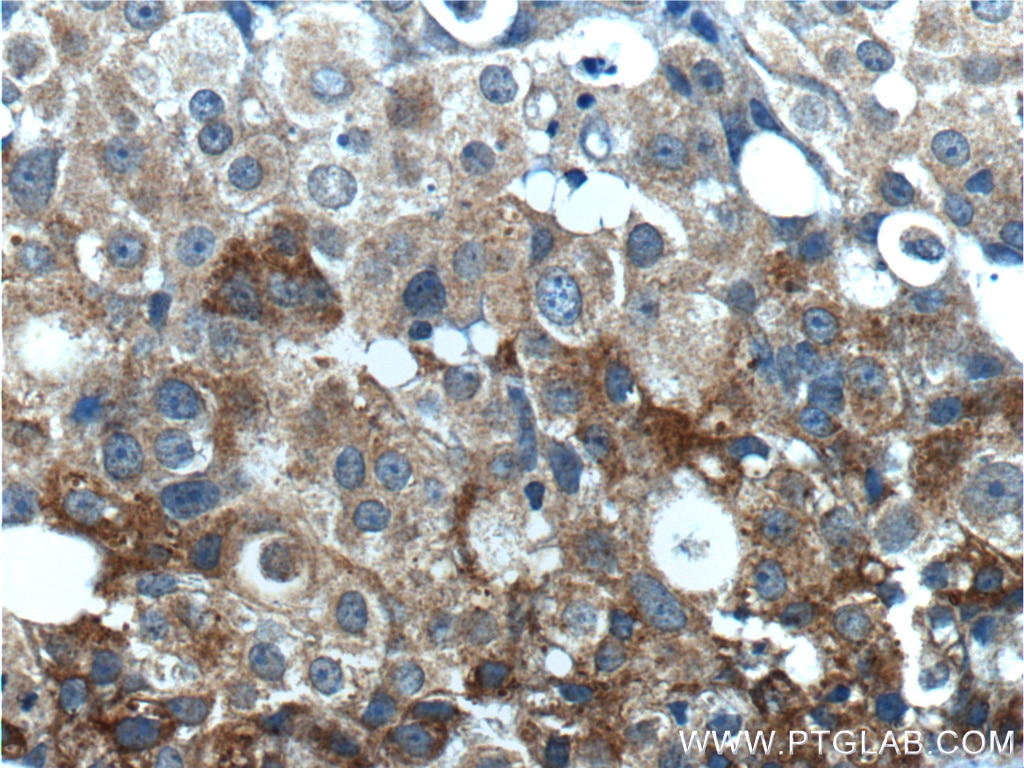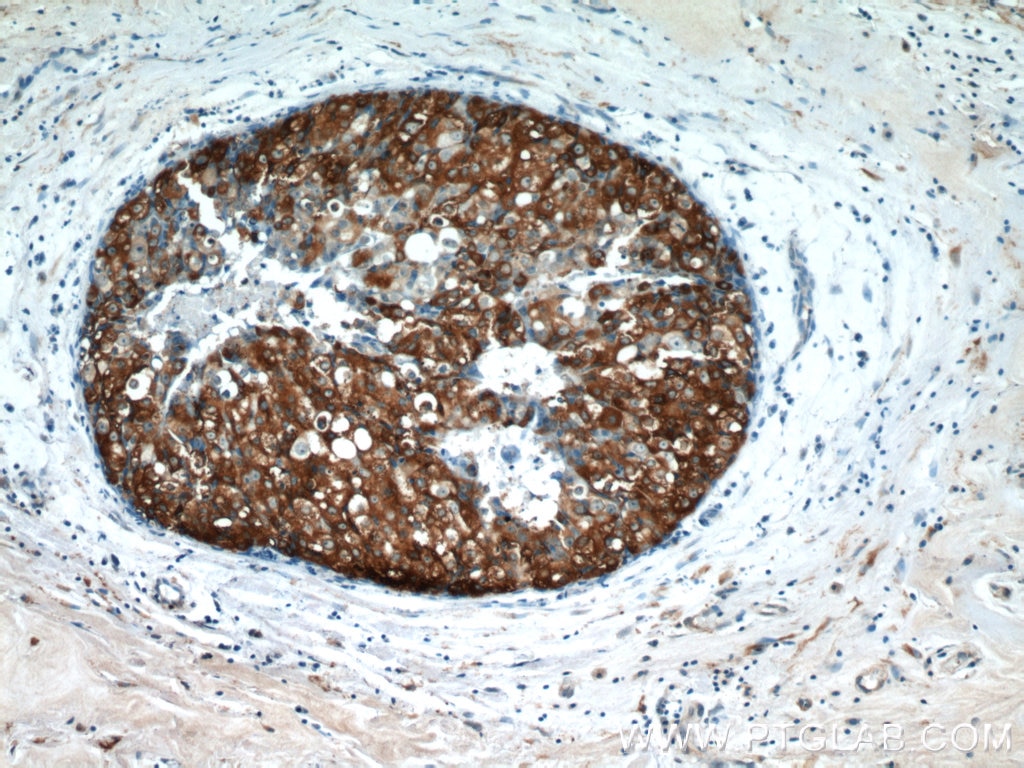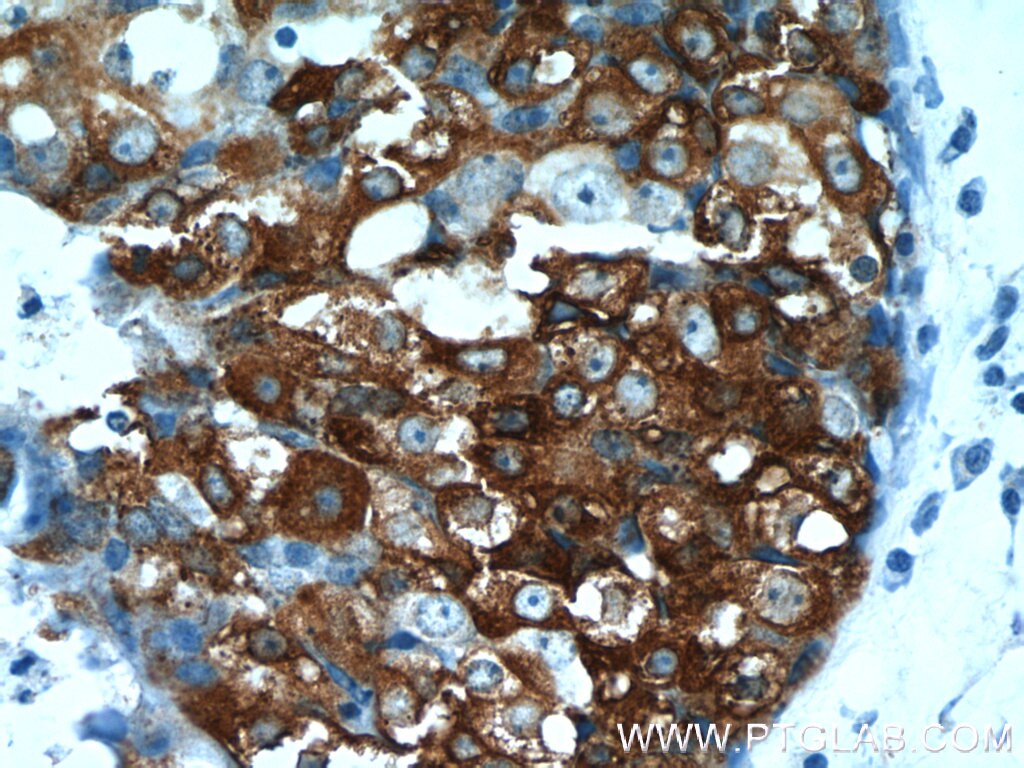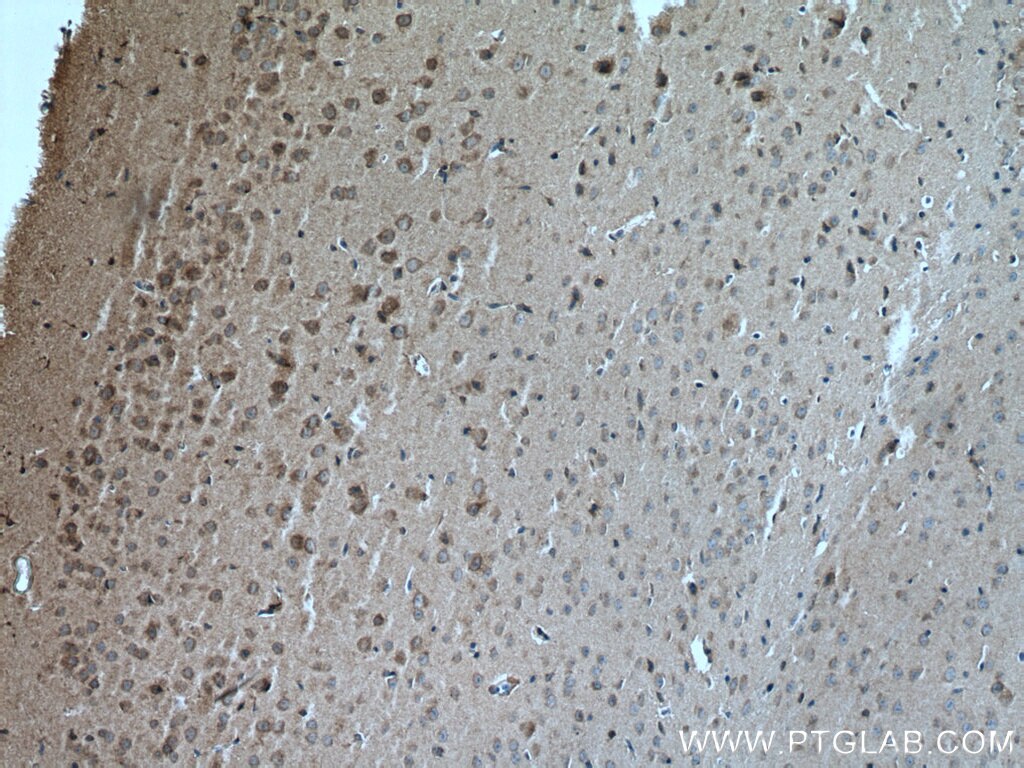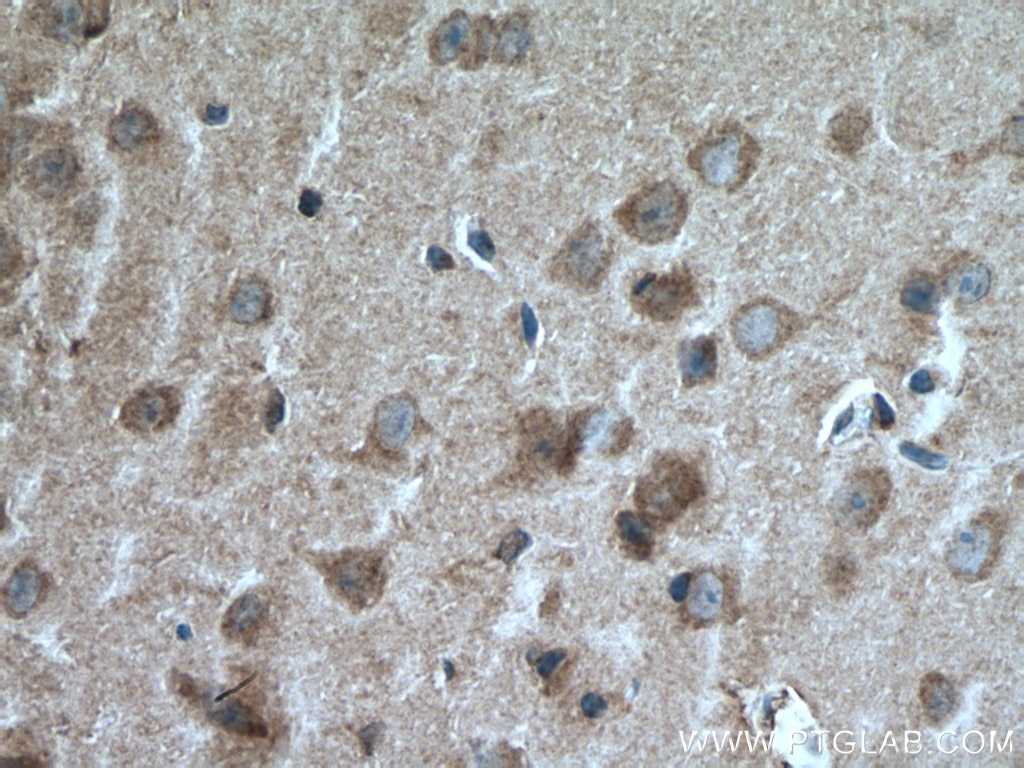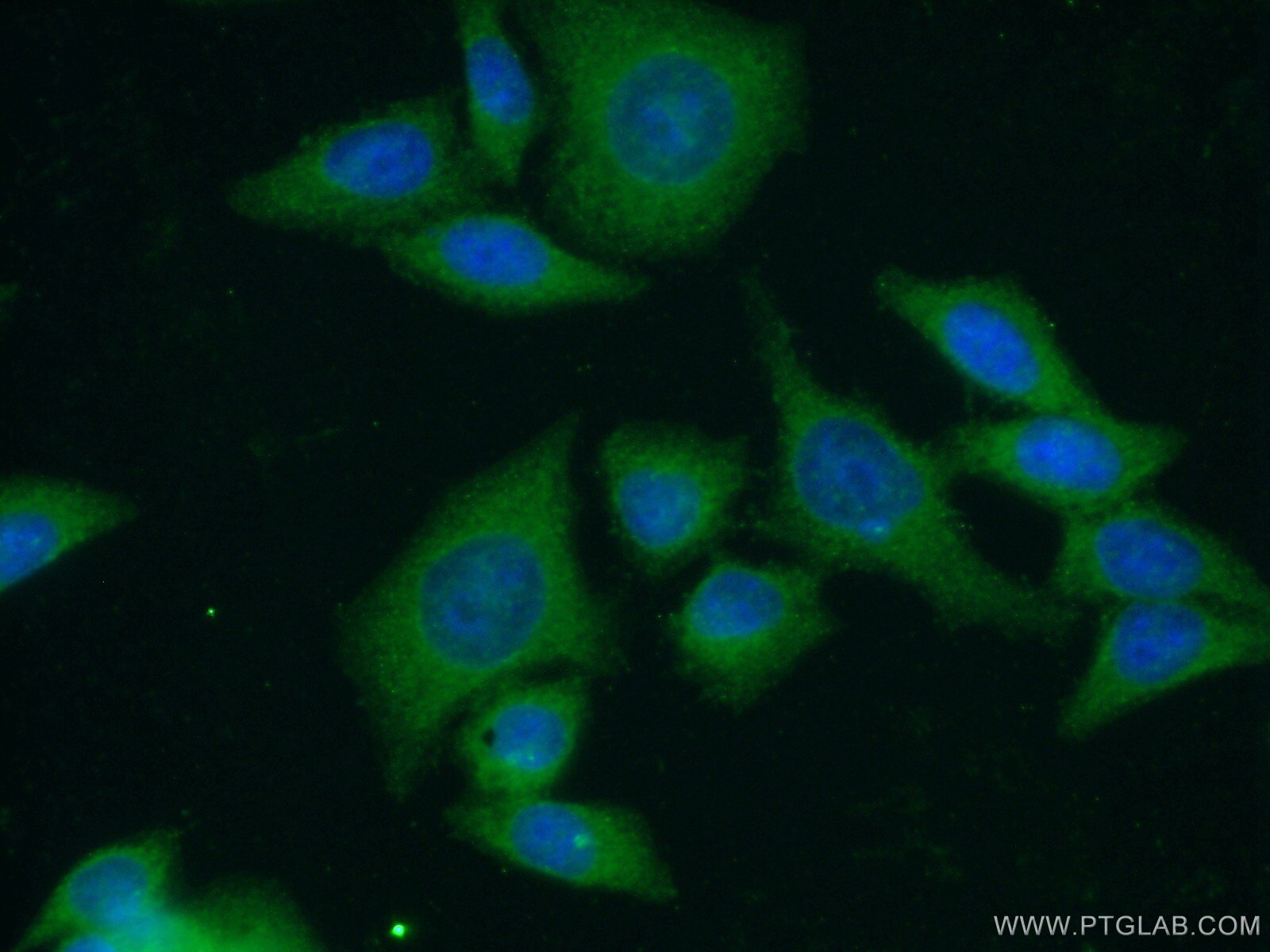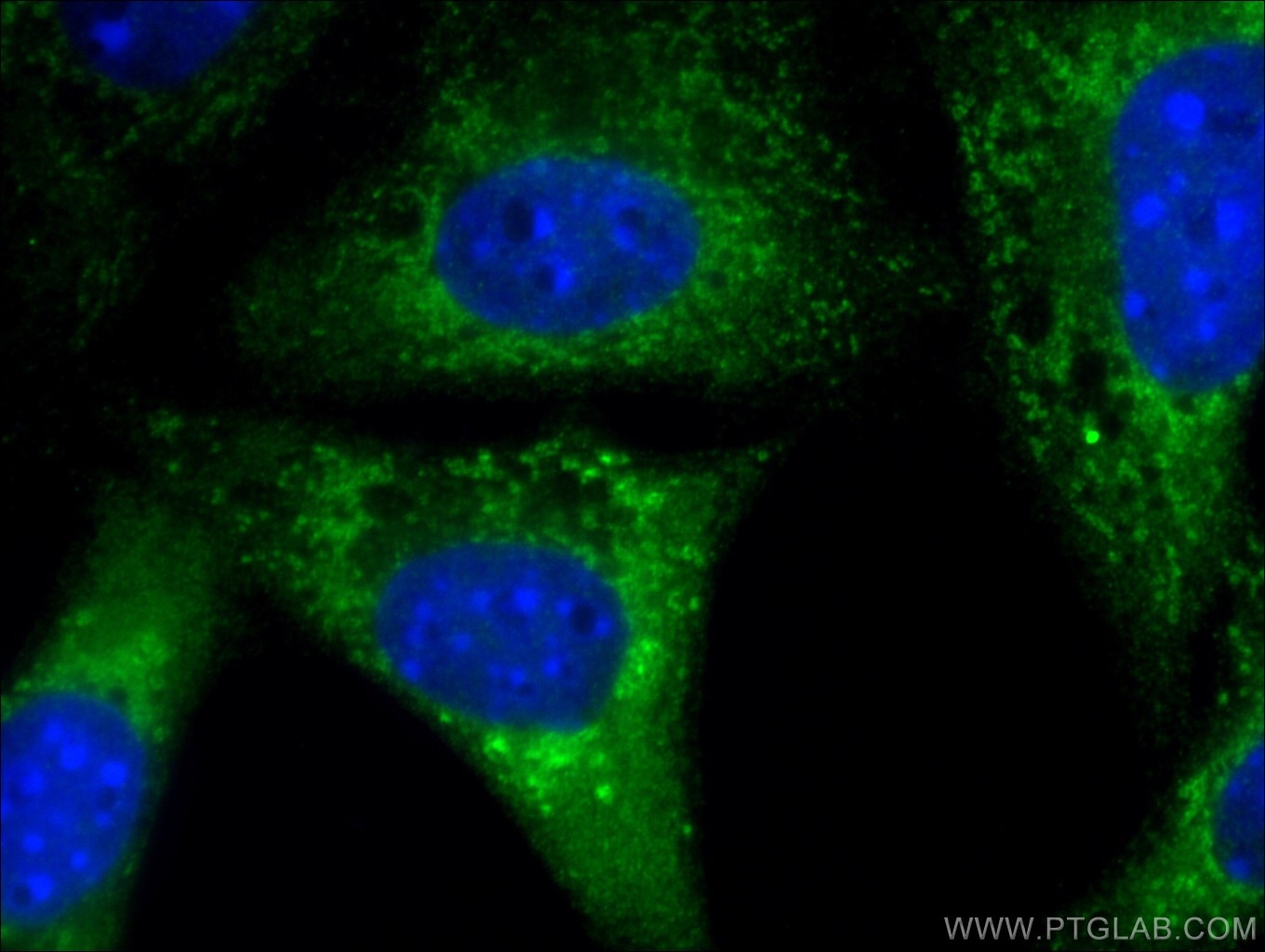Anticorps Polyclonal de lapin anti-Leptin
Leptin Polyclonal Antibody for IHC, IF/ICC, ELISA
Hôte / Isotype
Lapin / IgG
Réactivité testée
Humain, souris et plus (1)
Applications
IHC, IF/ICC, ELISA
Conjugaison
Non conjugué
N° de cat : 17436-1-AP
Synonymes
Galerie de données de validation
Applications testées
| Résultats positifs en IHC | tissu d'estomac humain, tissu cérébral de souris, tissu de cancer du sein humain, tissu hépatique humain, tissu ovarien de souris, tissu ovarien humain, tissu placentaire humain, tissu testiculaire humain il est suggéré de démasquer l'antigène avec un tampon de TE buffer pH 9.0; (*) À défaut, 'le démasquage de l'antigène peut être 'effectué avec un tampon citrate pH 6,0. |
| Résultats positifs en IF/ICC | cellules HeLa, cellules NIH/3T3 |
Dilution recommandée
| Application | Dilution |
|---|---|
| Immunohistochimie (IHC) | IHC : 1:200-1:800 |
| Immunofluorescence (IF)/ICC | IF/ICC : 1:50-1:500 |
| It is recommended that this reagent should be titrated in each testing system to obtain optimal results. | |
| Sample-dependent, check data in validation data gallery | |
Applications publiées
| IHC | See 5 publications below |
Informations sur le produit
17436-1-AP cible Leptin dans les applications de IHC, IF/ICC, ELISA et montre une réactivité avec des échantillons Humain, souris
| Réactivité | Humain, souris |
| Réactivité citée | Chèvre, Humain, souris |
| Hôte / Isotype | Lapin / IgG |
| Clonalité | Polyclonal |
| Type | Anticorps |
| Immunogène | Leptin Protéine recombinante Ag11507 |
| Nom complet | leptin |
| Masse moléculaire calculée | 167 aa, 19 kDa |
| Numéro d’acquisition GenBank | BC060830 |
| Symbole du gène | Leptin |
| Identification du gène (NCBI) | 3952 |
| Conjugaison | Non conjugué |
| Forme | Liquide |
| Méthode de purification | Purification par affinité contre l'antigène |
| Tampon de stockage | PBS with 0.02% sodium azide and 50% glycerol |
| Conditions de stockage | Stocker à -20°C. Stable pendant un an après l'expédition. L'aliquotage n'est pas nécessaire pour le stockage à -20oC Les 20ul contiennent 0,1% de BSA. |
Informations générales
Leptin is a protein that is secreted by white adipocytes, and which plays a major role in the regulation of body weight. Leptin is the most critical hormone in the homeostatic regulation of energy balance among those so far discovered. Leptin primarily acts on the neurons of the mediobasal part of hypothalamus to regulate food intake, thermogenesis, and the blood glucose level. Leptin also has several endocrine functions, and is involved in the regulation of immune and inflammatory responses, hematopoiesis, angiogenesis and wound healing. Mutations in this gene and/or its regulatory regions cause severe obesity, and morbid obesity with hypogonadism. Leptin has also been linked to type 2 diabetes mellitus development.
Protocole
| Product Specific Protocols | |
|---|---|
| IHC protocol for Leptin antibody 17436-1-AP | Download protocol |
| IF protocol for Leptin antibody 17436-1-AP | Download protocol |
| Standard Protocols | |
|---|---|
| Click here to view our Standard Protocols |
Publications
| Species | Application | Title |
|---|---|---|
Biomedicines Leptin, Leptin Receptor, KHDRBS1 (KH RNA Binding Domain Containing, Signal Transduction Associated 1), and Adiponectin in Bone Metastasis from Breast Carcinoma: An Immunohistochemical Study. | ||
Mol Immunol Inflammatory arthritis increases the susceptibility to acute immune-mediated hepatitis in mice through enhancing leptin expression in T cells | ||
Cell Death Discov Molecular mechanism underlying miR-204-5p regulation of adipose-derived stem cells differentiation into cells from three germ layers | ||
Biomed Res Int Polydatin Inhibits Adipose Tissue Inflammation and Ameliorates Lipid Metabolism in High-Fat-Fed Mice. | ||
J Immunol Leptin Promotes Monosodium Urate Crystal-Induced Inflammation in Human and Murine Models of Gout. | ||
Oncoimmunology Leptin decreases Th17/Treg ratio to facilitate neuroblastoma via inhibiting long-chain fatty acid catabolism in tumor cells |
